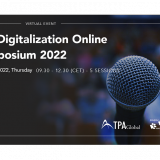Indirect Tax Technology becomes a universal solution to tax fraud

Tax fraud has been a major economic problem concerning most of the countries for decades. It leads to low government revenue, low government spending and high tax gap*. This fact helps to explain the development and growth under potential for many countries. Governments have been increasingly leveraging technology to reduce the tax gap (and VAT gap) since the prevalance of computers and the internet. One of the areas that helps governments to raise significant revenue is indirect tax technology by means of mandatory reporting of indirect tax data. Indirect tax technology utilizes electronic systems to audit transaction data of taxpayers. Tax and revenue authorities can better track the goods and services tax ( or value added tax) taxpayers are liable to pay.
Indirect tax technology regulations can be grouped into 3 main subcategories.
What is e-invoicing? What is an e-invoice?
Electronic invoicing is the exchange of electronic accounting documents such as invoices, debit and credit notes between trade parties directly, through service providers or through a government portal. Electronic invoice is an invoice generated in machine readable format such as XML and JSON and can be embedded in a PDF. The machine readable format enables automatic reading by ERP and accounting systems. In most cases, the pure PDF invoice is not counted as an electronic invoice.
In most of the Latin American countries, Italy, Turkey, Indonesia, Egypt and India, invoice clearance model is mandatory for transactions between taxpayers: Invoice data is transmitted in real time to the tax authority, where it is checked and validated, before being redirected to the invoice recipient. This process is called continuous transaction control (CTC).
Who is eligible for e-Invoice?
Every business that sells goods and provides services, whether subject to tax or not, can benefit from electronic invoicing. Large companies intensively use e-Invoice systems due to the large number of invoices they issue by ERP accounting software. Also, small and medium enterprises are increasingly using e-invoice software in recent years. The time savings and cost advantages of electronic invoicing highly reflect on their choices.
What is Peppol e-invoicing?
Peppol is a four-corner procurement system in which electronic documents such as e-invoices and e-orders are transferred. Trade parties have their own Peppol Access Point Providers which can transmit the e-documents through the peppol network. It provides a secure national and international network for transactions. Currently, Peppol is widely used in Europe and expanding to other continents.
What is e-invoice reporting? What is real time invoice reporting?
Electronic invoice reporting is a transaction and tax data reporting model mostly used by European governments for audit purposes. In this model, invoices are delivered to the recipients through any channel and in any format as standard. In addition, taxpayers report the simplified XML version of each invoice only with mandatory content (header, total amount, total VAT amount). These XML documents must be delivered to the tax authorities’ online portals usually in real time (in a few minutes or hours after generation). It is called real time invoice reporting. Currently, it is applied in Hungary, Spain, Greece, and Turkey. It is common in EU countries as governments cannot make e-invoice clearance models mandatory without deregulation. Current EU e-invoicing law allows recipients to ask for a paper invoice instead of a machine readable / electronic one.
SAF-T and other periodic VAT reports
These reports usually include total VAT amounts or a summary of all transactions done in a period (sale and purchases of goods, services, assets, etc.). The most widespread versions are VAT return, VAT audit reports and SAF-T.
What is the Standard Audit File for Tax (SAF-T)?
SAF-T is an international standard for the electronic transmission of accounting data from enterprises to national tax authorities. Its standards are first defined by the OECD but national authorities release their own versions in XML data format. The SAF-T reporting obligation is currently in place across a range of European countries. Tax authorities either request it on demand prior to a tax audit or mandate periodic submission (such as monthly or annually).
SAF-T is mandatory in Austria, Czechia, Poland, Norway, Portugal, Lithuania, Luxembourg and France. In addition, Romania and Hungary will introduce a mandate in 2022.
*Tax gap is the difference between the total amount of taxes owed and the amount paid by taxpayers.












